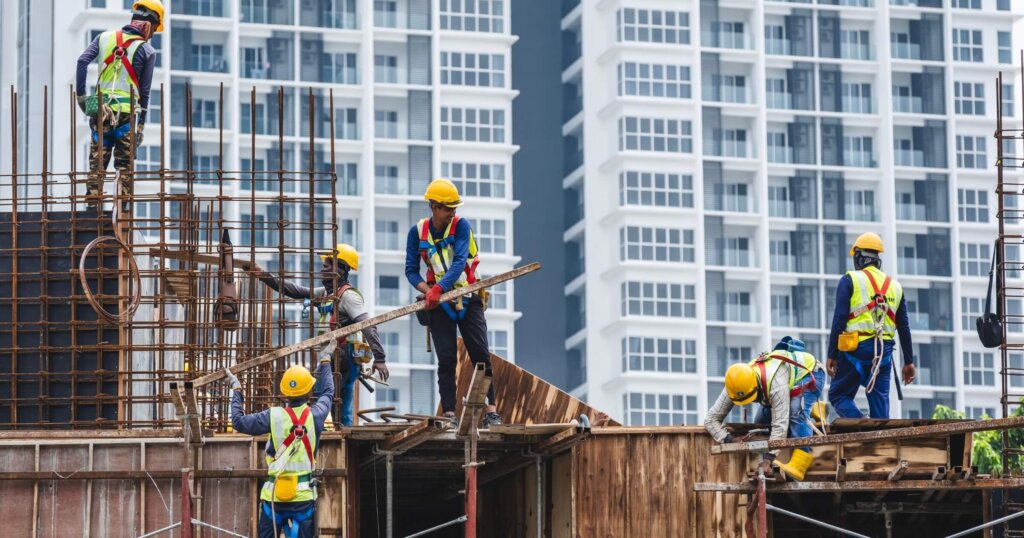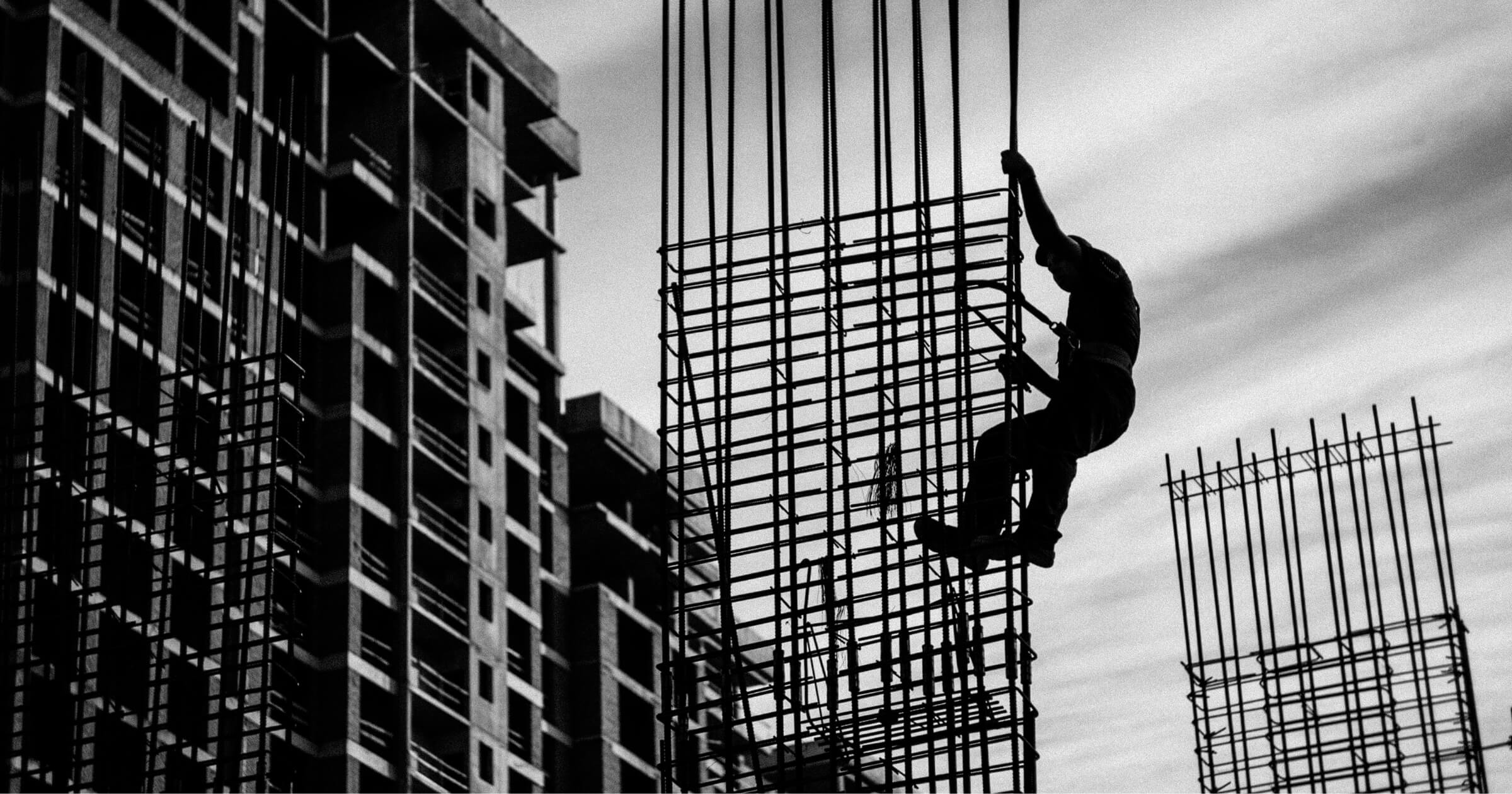Skilled construction workers are in short supply across the U.S., making building homes, roads, and infrastructure more challenging and expensive. With demand for projects rising and fewer domestic workers entering the trades, the industry is leaning heavily on international labor to keep things moving. Immigrant workers play a huge role in keeping job sites staffed, but current policies aren’t always set up to support them.
Quick look:
- Immigrant workers make up nearly 30% of the U.S. construction workforce, filling critical gaps as the industry faces labor shortages and an aging workforce.
- As younger generations opt out of trades, immigrant labor, especially from Hispanic and Asian communities, has become a cornerstone to keeping projects on schedule.
- Immigration policies are slow and restrictive, making it difficult for qualified workers and employers to connect efficiently.
- Reforming visa processes and expanding employment-based options could stabilize the workforce and accelerate infrastructure development across the country
Trends in the construction workforce in the U.S.
The construction industry has been short on workers for years, and the gap keeps widening. As of early 2025, it’s estimated that the industry needs around 439,000 additional workers to keep up with demand. That number isn’t surprising when you look at what’s happening behind the scenes.
A large chunk of the workforce is nearing retirement. In 2003, only 11.5% of construction workers were 55 or older. By 2020, that number had nearly doubled to 22.7%. Experienced workers are aging out, and fewer younger workers are stepping in to replace them.
The share of construction workers under 35 dropped from 45% in 2007 to 36% by 2012, and it’s stayed there ever since. A lot of younger people just aren’t considering careers in the trades. One National Association of Home Builders survey found that only 3% of young adults were interested in construction work.
As a result, projects are taking longer, labor costs are climbing, and prices are increasing. This is one reason why housing has become so expensive and is unlikely to change without a profound shift in how we build and who we hire.

The role of international workers and immigrants in construction
Immigrant workers make up a considerable part of the construction workforce. About 30% of all construction workers in the U.S. are immigrants, according to the National Immigration Forum. That’s nearly one in three workers on any given job site.
In some trades, that number is even higher. For example, more than half of drywall installers and nearly 47% of painters are foreign-born. In places like California, Texas, and Florida, immigrants make up closer to 40% of the total construction workforce, showing just how critical they are in keeping things moving.
As the domestic labor pool continues to shrink, the role of international workers will only grow.
Demographic breakdown
When we talk about immigrant workers in construction, the numbers paint a clear picture of who’s keeping the industry running.
- Hispanic immigrants make up the largest share by far. Nearly 70% of immigrant construction workers are Hispanic, and over two-thirds of all Hispanic construction workers in the U.S. are foreign-born. This group is especially prominent in labor-intensive trades like concrete, roofing, and framing.
- Asian immigrants also represent a notable portion of the workforce—about 62.5% of Asian construction workers are foreign-born, with many working in specialized or technical trades.
- Meanwhile, Black workers make up about 5.5% of the construction workforce, but only around 17% of them are immigrants.
And while it’s a sensitive topic, it’s important to note that undocumented workers make up an estimated 13% of the total construction workforce, though estimates vary depending on the source. In many cases, these are skilled, experienced workers doing the same jobs as everyone else, but without the same protections or stability.
With fewer young people entering the trades and older workers aging out, many construction companies couldn’t meet deadlines without the help of immigrant workers. This demand will likely continue to rise, requiring better labor policies that support the construction sector.
Current immigration and labor policy in the U.S.
The need for international labor in construction is clear, but the policies that govern it are often slow, confusing, and out of step with what the industry needs. Between long wait times, paperwork-heavy application processes, and strict annual visa caps, it’s challenging for workers and employers to navigate the system.
That said, there are a few key pathways that allow immigrants to work in construction legally:
- H-2B Temporary Non-Agricultural Worker Visa: This is commonly used for seasonal or short-term labor needs, like during construction booms. However, spots are limited, and competition is fierce.
- Employment-Based Green Card (EB-3): This is a more permanent option that allows both skilled and unskilled workers to live and work in the U.S. long-term. It is ideal for full-time, ongoing construction roles.
- DACA (Deferred Action for Childhood Arrivals) or TPS (Temporary Protected Status): These programs for immigrants already living in the U.S. allow them to stay and work legally, often filling critical labor gaps.
While these options exist, they’re not always easy to access. The process can take months—or even years—and many qualified workers are left out simply because of red tape or quota limits.
What needs to change
If the construction industry is going to keep up with demand, immigration policy needs some serious upgrades. The current system isn’t built for speed or flexibility, and that’s a problem when projects stall due to labor shortages. Here’s what would make a real difference:
- Cut down visa processing times so qualified workers can get to job sites faster instead of getting stuck in bureaucratic limbo.
- Raise the cap on employment-based visas specifically for construction roles, especially in areas facing the most severe shortages.
- Develop targeted programs that connect employers with international workers in high-demand trades, streamlining the hiring process for both sides.
Bottom line
Immigrants are a driving force behind the construction industry with nearly one in three construction jobs held by international workers. It’s clear the industry depends on their skills to finish job sites nationwide.
To keep building, the system needs to evolve. Faster visa processing, higher employment caps, and smarter policies can have a big impact on workers, businesses, communities, and U.S. infrastructure.
Want more updates on labor trends, construction policy, and workforce insights? Subscribe to our newsletter and stay informed on the issues shaping the industry.



1 comment